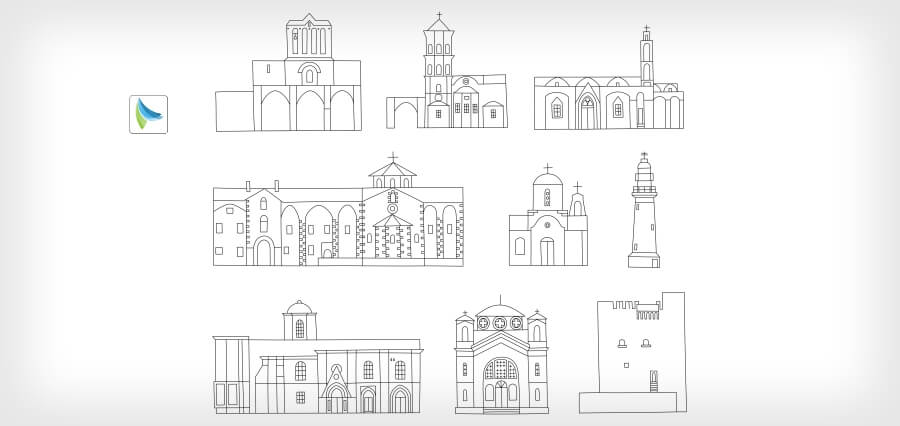Modern architectural design is a living field that shapes spaces in which people live, work, or simply interact. It remains an evolving field where new ideas, technologies, and materials are merged into its design. It is only through understanding of some elements that define this form of architecture that it is appreciated for the real essence of contemporary architecture. They do not only make a building beautiful but enhance the functionality and sustainability of such a structure.
- Simplicity and Clean Lines
One of the common defining features of modern architecture is simplicity. This method holds functionality as a priority and reduces ornamentation. Clean geometric lines define the lines, hence, having an unadorned look but one that provides a sense of order and calmness. Geometric shapes, mostly simple, could have an open and airy feel to them. This also translates to functionality making the spaces very easy to move around in and also to keep clean.
It has been proven that less-distraction environments encourage better attention and productivity. Therefore, the idea of modern architecture design is to make an environment clear yet user-friendly.
- Open Floor Plans
Open floor plans are another mark of modern architecture. This concept eliminates the traditional barriers between rooms to create large, flexible spaces that can be used for multiple purposes. By removing the walls, natural light flows into the space more freely and, therefore, enhances the overall ambiance.
According to statistics, people demand houses that have open plans. The National Association of Home Builders released a survey showing that nearly 83% of house buyers enjoy open layouts. Such houses are designed in ways that nurture the lifestyle of today’s families. In such house designs, it promotes communication among its inhabitants as well as interaction.
- Beauty with Mother Nature Integration
The connection between indoors and outdoors is the focal point in contemporary architectural design. In such settings where natural spaces are brought inside homes, well-being and harmony are enormously enhanced. Often large windows, sliding glass doors, and outdoor terraces cause the boundaries between indoors and outdoors to become obscured.
Studies have indicated that exposure to nature enhances mental health and productivity. According to the American Institute of Architects, access to natural light and views hugely contributes to occupant comfort and satisfaction. For this reason, most architects are now designing structures that harmoniously blend with their surroundings.
- Sustainable Practices
New architectural design is at the heart of sustainability. With the rapid growth of climate change and environmental deterioration, architects are increasingly looking into energy-efficient and environmentally friendly buildings. Sustainable design considers every aspect of a structure, from the material used to the energy systems.
The use of renewable materials, energy-efficient appliances, and smart insulation techniques is on the rise. Buildings can be designed with solar panels or green roofs to minimize their carbon footprint. As the World Green Building Council points out, buildings account for about 39% of the entire carbon emissions on Earth. Therefore, sustainable architecture is the future of this earth.
- Technological Integration
The modern architecture embraces technology in changing the way buildings are designed and constructed. Enhanced energy management and user-friendly experience define smart home technology. Automation systems involved include lights, heating, and security. Ideally, it makes homes more efficient and responsive to the needs of their occupants.
Additionally, innovations in construction materials and methods, for example, 3D printing, and modular construction, allow greater precision in designing more complicated forms. According to the McKinsey Global Institute, there is a potential increase in productivity for the construction sector by up to 20% if they adopt these technologies. And therefore, technology is a key facilitator of modern architectural innovations.
- Functionality End
The key in modern architectural design is functionality. Every element of a building serves a purpose, and the architects work on how the spaces are going to be used, hence designing them to facilitate easy movement and interaction. This makes it more comfortable and practical for the occupants to use spaces effectively.
Further, multi-functional spaces are in more demand. A room can be an office in the daytime and a guest room at night. This kind of flexibility is especially useful in urban settings where space is often a precious commodity. Knight Frank has reported that homes with adaptable designs are worth more on the market, reflecting the growing demand for versatile living spaces.
- Cultural Reflection
Modern architecture thus becomes a reflection of its originating culture. Thus, architects consider local traditions, history, and the climate in the design for buildings to resonate with their environment. This would enhance the aesthetic appeal, while, thereby fostering a sense of community.
For example, structures along the waterfront should be those that represent maritime history, while those in an urban landscape should have aspects which celebrate local art and culture. Thus, the interplay between architecture and cultural identity is what gives out the essence of spaces that people can associate themselves with and love.
Conclusion
There is so much depth and constant change within the parameters of modern architectural design. With an understanding of these seven underlying aspects of simplicity, open floor plans, integration with nature, sustainability practices, technological integration, functionality, and even a sense of cultural reflection, one can understand what makes the contemporary buildings not only aesthetically pleasing but also functional and meaningful.
As the society evolves, so will these factors, altered by new challenges and opportunities and changing through time. Architecture today will undoubtedly shape tomorrow’s space environment, reflecting the aspirations and values of generations yet to come.


















